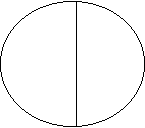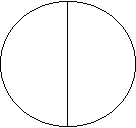

Summer Research Program for Science Teachers
Bayard Rustin High School for the Humanities, Manhattan
2000
“Now, the Star-Belly Sneetches
Had bellies with stars
The Plain-Belly Sneetches
Had none upon thars.
Those stars weren’t so big.
They were really so small.
You might think such a thing
wouldn’t matter at all.”
The Sneetches and Other Stories
When we think of biodiversity we often think
of the many varieties of plants and animals one can find in the
world. Indeed, this idea struck Charles Darwin during his
voyage on the HMS Beagle. [9-12 Content Standard G- Historical perspectives] In a broader
concept, biodiversity can mean the variation one can observe
within a species. This is called intra-species diversity.
In this activity, you will observe
intra-species variation, specifically two different strains of
the same bacteria. You will see how the interactions of
these two varieties will affect change in their offspring while
the original strains remain unchanged.
1. Define
intra-species variation.
2.
Perform standard microbial streaking procedures.
3.
Collect data.
4.
Draw observations.
1.
Bunsen burner
2.
Bacterial Synergism Demonstration Kit (Carolina #AA-15-4744)
3.
Disinfectant
4.
Inoculating loop
5.
Serratia marcescens WCF (colorless mutant strain)
6.
Serratia marcescens 933 (colorless mutant strain)
7.
Synergism agar (5g peptone, 10ml glycerol, 20g agar in 1L
distilled water)
8.
Sterile petri dishes (3 per group)
9.
Parafilm
10.
Wax pencils
[Teaching Standard D- Make accessible science materials]
1.
Give students 3 petri dishes with sterile synergism agar.
2.
Label one petri dish “strain WCF” as a control.
3.
Label the second petri dish “933 strain” as a control.
4.
With a wax pencil, draw a line on the third petri dish as to
divide it in half.
5.
Label one side WCF and the other side 933. This will be the
experimental plate.
6.
Streak one half of the first dish with the WCF culture of the
bacterium Serratia marcescens. Streak one half of the
second plate with the 933 culture of Serriatia. See diagram
below.


7.
In the experimental plate, streak both bacterial cultures on
their appropriate sides, being careful to streak the two bacteria
within one centimeter of each other at their closest point.
See diagram below.

WCF
933
8.
Seal each inoculated dish with a strip of Parafilm.
9.
Incubate these plates right side up (cover on top) at room
temperature, and observe each plate for three to four days.
10.
Draw your observations below.



WCF-c
933-c
WCF 933
11.
After three days, take a small sample from each of the bacteria
on the experimental plate. Streak them back to the
appropriate control plates. i.e. using proper bacterial methods,
streak experimental WCF on the unused half of the control WCF
plate.
12.
Repeat step 11 for the 933 control and experimental plate.
13.
Reseal each control plate with parafilm and incubate.
14.
Draw your observations below.
 |
 |
1. Why must an inoculating loop be heated in the Bunsen burner before and after inoculation? _______________________________________________________
2. Compare the control plates to the experimental plates after three days. Describe what you see.
______________________________________________________________________
3.
What is your hypothesis as to what happened?
______________________________________________________________________
[Teaching Standard B- Orchestrate scientific discourse]
4.
After the seven days of incubation, describe what has happened in
each of the control plates.
_______________________________________________________________
5. Does the change that occurred in the experimental plate a genetic change or an environmental change? Explain.
___________________________________________________________________
[Content Standard Unifying Concepts- Evidence and explanation]
[9-12 Content Standard A- Design a scientific investigation]